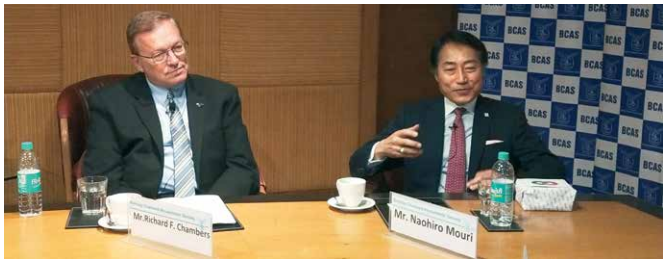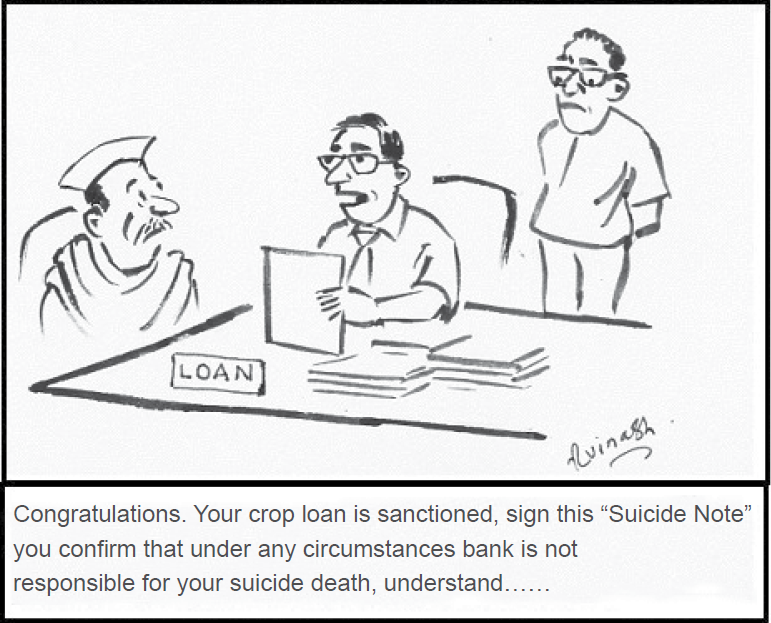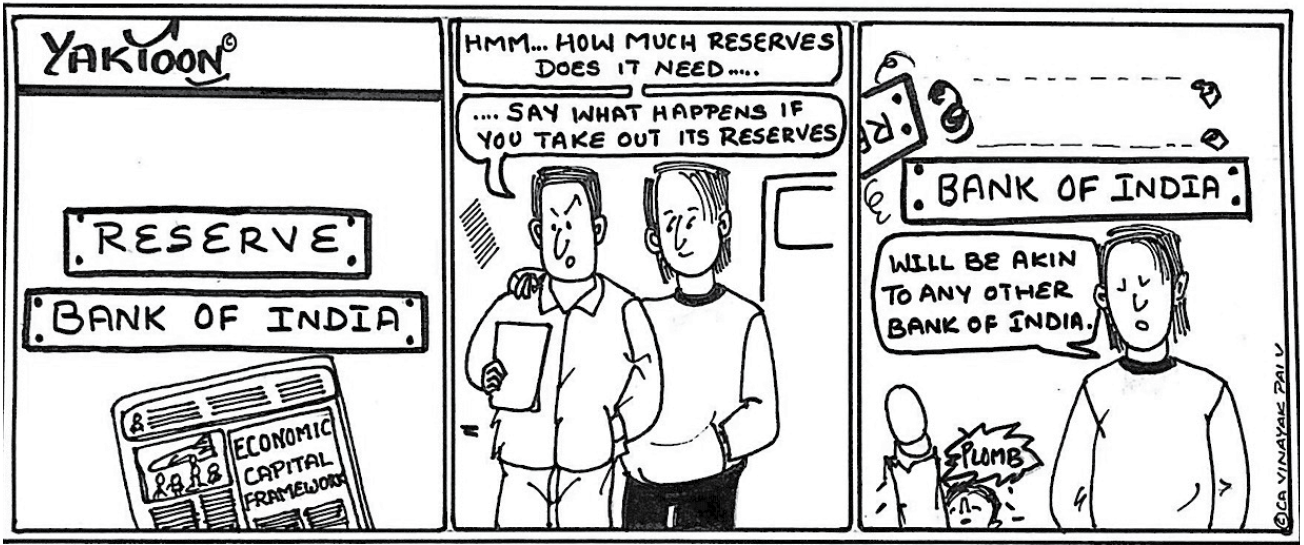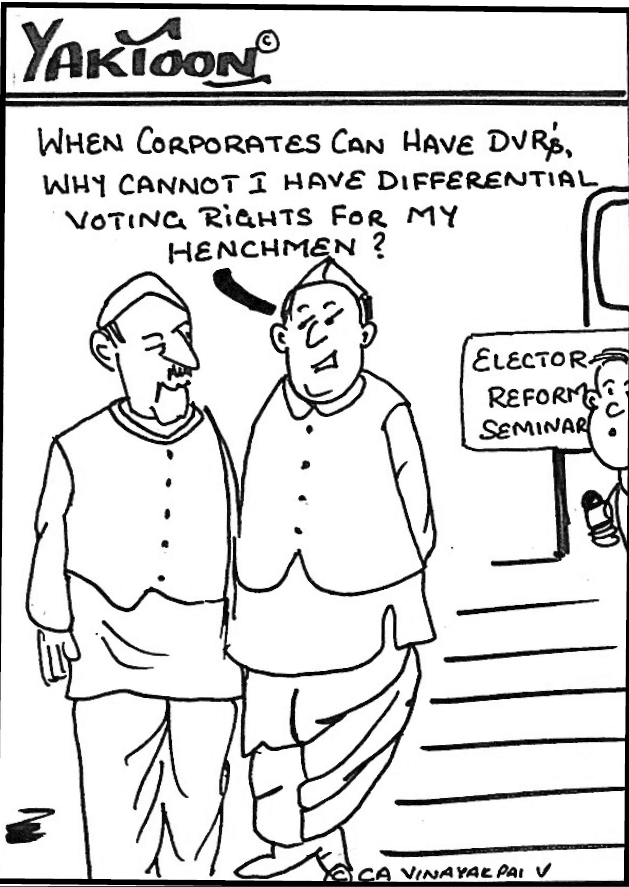PROSECUTION – The word Prosecution makes every person’s blood run cold. The
menace of black money, i.e., unaccounted money, and tax evasion have assumed
gigantic proportions. The need to control the menace resulted in taking of
drastic remedial measures by the Government. Prosecution and the resultant
terror of imprisonment serve as a powerful deterrent. Under the Income Tax
Act, 1961 there are various sections for Penalties and Provisions to
ensure/enforce tax compliance, but the best and most effective measure is
Prosecution. Assessment proceedings are civil proceedings while penalty
proceedings are quasi-criminal and prosecution proceedings are criminal in
nature. Prosecutions for offences committed by an assessee are tried by the
Magistrates in the Criminal Courts of the country and the procedure thereof is
governed by the provisions of the Indian Penal Code where attracted, as well as
the rules in the Code of Criminal Procedure and the Indian Evidence Act. In
simple words, we can say that the Income Tax Department has three ways to
punish the assessee, i.e. Levy Interest, Levy Penalties and Prosecution if he
does not follow provisions as prescribed by the Act. Monetary Punishment does
not have that impact on the assessee that Prosecution proceedings have.
The roots of
such harsh/rigorous provisions of Prosecution were found in the Wanchoo
Committee Report. The final report by the said Committee states as follows:
NEED FOR VIGOROUS PROSECUTION POLICY
In the
fight against tax evasion, monetary penalties are not enough. Many a
calculating tax dodger finds it a profitable proposition to carry on evading
taxes over the years if the only risk to which he is exposed is a monetary
penalty in the year in which he happens to be caught. The public in general
also tends to lose faith and confidence in tax administration once it knows
that even when a tax evader is caught, the administration lets him get away
lightly after paying only a monetary penalty, when money is no longer a major
consideration with him if it serves his business interests….
The Supreme
Court in Gujarat Travancore Agency vs. CIT (1989) 77 CTR (SC) 174: (1989)
177 ITR 455 (SC) observed that the creation of an offence by the statute
proceeds on the assumption that society suffers injury by the act of omission
of the defaulter and that a deterrent must be imposed to discourage the
repetition of the offence.
OFFENCES AND PROSECUTION UNDER INCOME TAX ACT, 1961
The term
“offence” is not defined under the Income Tax Act. Even the
Constitution does not define the term “offence” for the purpose of
Article 20. Section 3(37) of the General Clauses Act defines
“offence” to mean any act or omission made punishable by any law for
the time being in force. This definition would apply to ascertain whether or
not an offence had been committed and only if there is an offence committed the
offender would be prosecuted and would attract liability for punishment in
accordance with the law in force at the relevant time of the commission of the
offence. The term Prosecution is also not defined under the Income Tax Act;
however, Webster’s dictionary defines Prosecution as “The institution and
carrying on of a suit in a court of law or equity, to obtain some right, or to
redress and punish some wrong; the carrying on of a judicial proceeding on
behalf of a complaining party, as distinguished from the defence.”
CBDT recently
tabled its report[1]
on Performance Audit on Administration of Penalty and Prosecution before
Parliament wherein they pointed out various gaps in Administration of
Prosecution by the Department. They made some important recommendations; (a)
more robust mechanism to be employed for identifying cases for prosecution
which takes into account timelines, quantum of tax evasion and contemporary
impact, (b) posting of designated and experienced Nodal officer to handle
prosecution, (c) to identify the stage of pendency of all cases in the various
courts and follow it actively for resolution, (d) CBDT to consider compounding
offences before launching Prosecution so that revenues are collected, (e) CBDT
to deploy prosecution machinery for high-impact cases and avoid focusing on
low-impact cases.
Recently, it
has become a trend and it has been observed that notices for launching of
Prosecution are being issued in large numbers. The department went into
overdrive and issued show-cause notices en masse after CBDT released
Standard Operating Procedure to be followed for Prosecution in cases of the
TDS/TCS with a strict time frame to complete the entire process from
identification to passing order u/s. 279(1)/279(2) of the Act. Even for the
technical lapse, the department launched Prosecution or forced the assessee to go
for compounding. During FY 2017-18 (up to the end of November, 2017), the
Department filed Prosecution complaints about various offences in 2225 cases
compared to 784 for the corresponding period in the immediately preceding year,
marking an increase of 184%. Therefore, it has become very important to be
aware of the laws relating to Prosecutions under direct taxes.
KINDS OF OFFENCES
Income Tax
Act contains a Chapter XXII dealing with ‘offences and prosecution,’ i.e.
section 275A to section 280D of the Act, refer Appendix. Provisions of the
Criminal Procedure Code, 1973 are to be followed relating to all offences under
the Income Tax Act since the said Chapter XXII of the Act does not inter se
deal with the procedures regulating the prosecution. However, if the provisions
of the Code are contrary to what is specially provided for by the Act, then the
Act will prevail.
Recently,
Prosecutions have been initiated for various offences including wilful attempt
to evade tax or payment of any tax; wilful failure in filing returns of income;
false statement in verification; and failure to deposit the tax
deducted/collected at source or inordinate delay in doing so, among other
defaults.
For this
Article, sections 276B, 276C, 276CC and 277 of the Act are dealt hereunder
since most of the prosecution has been launched on the commission of offence
contained in these sections.
SECTION 276B – OFFENCE RELATED TO TAX DEDUCTION
Failure to
deduct tax is not an offence but having deducted but not paid to the Central
Government is an offence. If the accused wants to prove that he was prevented
by reasonable causes, the burden to prove is on the accused. The courts have
taken contrary positions with respect to Prosecution in the event the penalty
proceedings have been dropped. The Punjab and Haryana High Court held in Jag
Mohan Singh vs. ITO (1992) 196 ITR 473 (P&H) that the offence is
complete on the due date on which the amount should have been deposited but not
deposited and a late deposit will not absolve the accused; the fact that the
income-tax authorities charged interest on such deposit and did not impose
penalty will not absolve the accused from liability to Prosecution. However, in
Banwarilal Satyanarayan & Ors. vs. State of Bihar & Anr. (1989) 80 CTR
(Pat) 31: (1989) 179 ITR 387 (Pat), it has been held that when the
authority under the IT Act has dropped the penalty proceedings on finding that
assessee had furnished good and sufficient reasons for failure to deduct and/or
pay the tax, within time, the Prosecution for the same default is liable to be
discontinued.
SECTION 276C – WILFUL ATTEMPT TO EVADE TAX, ETC.
Section 276C
provides that if a person wilfully attempts to evade any tax, penalty or
interest chargeable or imposable under the Act, then without prejudice to any
penalty that may be imposable on him under any provisions of the Act, he will
be liable for prosecution. The Explanation inserted gives very wide coverage to
what constitutes ‘wilful attempt’. The Andhra Pradesh High Court in ITO vs.
Abdul Razaq (1990) 181 ITR 414 (AP) held that to spell out a wilful attempt
there must be an assessment on the return filed. The Rajasthan High Court in Gopal
Lal Dhamani vs. ITO (1988) 67 CTR (Raj) 175: (1988)172 ITR 456 (Raj) held
that what is contemplated is evasion before charging or imposing penalty or
interest; it may include wilful suppression in the returns before assessment
and completion; it is not necessary that an assessment must have been made
prior thereto and it is for the prosecution to prove the ingredients of the
offence before the
Criminal Court.
SECTION 276CC – FAILURE TO FURNISH A RETURN OF INCOME
With the
online return filings and various data at the disposal of the assessing
officer, it has become very easy to identify the assessees who despite having
taxable income have failed to file their tax return. This section opens with
the words “wilfully fails to furnish…return”. The word `wilful’
implies the existence of a particular guilty state of mind and it imports the
concept of mens rea. The Supreme Court (SC), in a recent ruling in the
case of Sasi Enterprises vs. ACIT [TS-43-SC-2014] has held that
prosecution proceedings u/s. 276CC of the Income Tax Act, 1961 (the Act) for
failure to file a return of income (ROI) could be initiated even while appellate
proceedings were pending. In deciding this case, the SC has placed reliance on
its earlier judgement in the case of Prakash Nath Khanna (Prakash Nath
Khanna vs. CIT [2004] 266 ITR 1 (SC)).
SECTION 277 – FALSE STATEMENT IN VERIFICATION, ETC.
This section punishes a person for providing the
Assessing Officer with information which he knows to be false or does not
believe to be true and thus induces him to make a wrong assessment resulting in
the levy of lower income-tax than is proper and due from the assessee. The
expression `person’ in this section is very wide and need not be restricted to
an assessee only. The Madras High Court in N.K. Mohnot vs. Chief CIT (1992)
195 ITR 72 (Mad) held Prosecution to be valid against the accused who in a
conspiracy with the other accused and certain employees in the race club
applied for duplicate tax deduction certificates in the names of winners,
forged the signatures of the original winners, made false documents and filed
returns containing false declarations and forged signatures and obtained tax
refund orders which were encashed by them.
SECTION 278E – ‘PRESUMPTION AS TO CULPABLE MENTAL STATE’
The burden of
proving the absence of mens rea is on the accused and provides that the
absence needs to be proved not only beyond ‘preponderance of probability’ but
also ‘beyond reasonable doubt[2]’.
He has to prove that he has no ‘culpable mental state’ which includes
intention, motive or knowledge of a fact or belief in, or reason to believe, a
fact. The Delhi High Court in V.P. Punj vs. Assistant Commissioner of Income
Tax & anr. (2002) 253 ITR 0369 held that in view of section 278E, the
absence of culpable mental state has to be proved by the accused in defence
beyond reasonable doubt — Otherwise the Court has to presume the existence of mens
rea.
SECTION 278B – OFFENCES BY COMPANIES / FIRMS/ ASSOCIATION OF PERSONS (AOP)
In case the
default is committed by a company/firm or AOP, the provisions of section 278B
of the IT Act prescribe that every person who was in charge of the company/firm
or AOP at the time of the commission of the offence will also be deemed to be
guilty and liable for Prosecution. Courts have held that a person in charge for
the purposes of section 278B means a person who is in overall control of the
day-to-day business of the company/firm/AOP.
Such person
will not be liable for prosecution if he proves the offence was committed
without his knowledge or that he exercised due diligence to prevent the
commission of such an offence. In case it comes to light that an offence has
been committed with the consent or connivance of or such offence is
attributable to some neglect on the part of a director, manager, secretary or
other officer of an entity, then such person will also be liable for
Prosecution.
SECTION 280 – ACCOUNTABILITY OF THE PUBLIC SERVANT
If a public
servant furnishes any information or produces any document in contravention of
the provisions of sub-section (2) of section 138, he would be punishable.
However, such Prosecution can be instituted only with the previous sanction of
the Central Government.
THE PROCEDURE FOLLOWED BY THE DEPARTMENT
The Income
Tax Act does not prescribe any specific procedure to be followed. However, the
Department follows its own Manual on Prosecution which lays down the various
rules and regulations for the launch of Prosecution and proceedings thereafter.
The Assessing Officer initiates the process and refers the matter to his
Commissioner with a report on the offence committed. The Commissioner, if
satisfied, will issue a notice to the assessee. If the assessee can prove
‘beyond doubt’ of no culpable mental state, then the Commissioner may direct
the AO not to file a complaint before the Court. It may be noted that if the
accused is aged 70 years or above, no prosecution is to be initiated in view of
instructions of the Board and judgment of Allahabad High Court in Kishan Lal
vs. Union of India (1989) 179 ITR 206 (All).
THE PROCEDURE FOLLOWED BY THE COURT
Once the
complaint is received, the Court summons the accused by sending the copy of the
complaint, and if the accused is not present on the day of summoning, then the
Court can issue a warrant against the accused, wherein he may be arrested and
produced before the Court.
After giving
the opportunity of hearing to the accused if the Court feels that there is no
apparent case, then the court will dismiss the complaint, whereas if there is
any primary evidence available, then the Court will frame a charge and the
Prosecution proceedings will be continued under Criminal Procedure Code. If the
trial results in a conviction, the appeal to the court will lie under the CPC
to be filed within 30 days of the date of order. Sanction for each of the
offence under which the accused is prosecuted is mandatory, otherwise the
entire proceedings will be void ab initio.
In the case
of Champalal Girdharlal vs. Emperior (1933) 1 ITR 384 (Nag) (HC), where
sanction was issued for an offence u/s. 277, however, the accused was found
guilty u/s. 277C, Therefore, it was held that the conviction was illegal.
When the
magistrate issues bailable or non-bailable warrant, necessary application for
seeking bail has to be made. If the bail application is rejected, an appeal
lies before the Session Judge and thereafter an application lies u/s. 482 of
the Criminal Procedure Code before the Hon’ble High Court.
PROOF OF ENTRIES IN RECORDS OR DOCUMENTS
By insertion
of section 279B of the Act by the Amending Act, 1989, the requirement to produce
a number of original records, documents, seized books of accounts, etc., before
the Courts for establishing the case have been dispensed with. It is now
possible for the Court to admit as evidence the entries on the records or other
documents in the custody of an income-tax authority and all such entries may be
proved either by the production of such records or other documents or by the
production of a copy of the entries certified by the income-tax authorities.
The question
is whether there is any mode of conciliation to avoid the rigours of
Prosecution; and the answer is compounding of offence.
COMPOUNDING OF OFFENCES
Section
279(2) of the Act provides that any offence under Chapter XXII of the Act may,
either before or after the institution of proceedings, be compounded by the
Chief Commissioner of Income Tax/Principal Chief Commissioner of Income Tax.
The CBDT has instructed that efforts should be made to convince the assessee to
go for compounding rather than face Prosecution. The Board has also instructed
that a prosecution should not ordinarily be compounded if prospects of success
are good. The number of complaints compounded by the Department during the
current FY (upto the end of November, 2017) stands at 1,052 as against 575 in
the corresponding period of the immediately preceding year, registering a rise
of 83%.
THE GENERAL MEANING OF COMPUNDING OF OFFENCES
Compoundable
offences are those which can be conciliated by the parties under dispute. The
permission of the Court is not required in such cases. When an offence is
compounded, the party, which has been distressed by the offence, is compensated
for his grievance.
A new set of
compounding guidelines are issued by the Income-tax Department vide
Notification F No. 185/35/2013 IT (Inv.V)/108 dated 23rd December,
2014 (2015) 371 ITR 7 (St) w.e.f 1st January, 2015.
The offences
under Chapter – XXII of the Act are classified into two parts (Category ‘A’ and
Category ‘B’) for the limited purpose of compounding of the offences, refer
Appendix. In case of an offence categorised in Category A, which are ‘less
grave’ offences, compounding is allowed only up to three occasions. Those
offences in Category B, or more serious offences, can be compounded only once.
The guidelines list down various other categories of persons who are not
eligible for compounding, for example: Offences committed by a person who was
convicted by a Court of law for an offence under any law, other than the Direct
Taxes laws, for which the prescribed punishment was imprisonment for two years
or more, with or without fine, and which has a bearing on the offence sought to
be compounded.
Notwithstanding
anything contained in the guidelines, the Finance Minister may relax
restrictions for compounding of an offence in a deserving case on consideration
of a report from the board on the petition of an appellant.
- Procedure for
compounding
1. Compounding of an offence may be considered
only in those cases in which the assessee comes forward with a written request
for compounding of offence;
2. The amount of undisputed tax, interest and
penalties relating to the default should have been paid;
3. The assessee should express his willingness to
pay both the prescribed compounding fees as well as establishment expenses;
4. The assessee undertakes to
withdraw any appeal filed by him, if any, in case the same has a bearing on the
offence sought to be compounded. In case such appeal has mixed grounds, some of
which may not be related to the offence under consideration, the undertaking
may be taken for appropriate modification on grounds of such appeal;
5. On receipt of the application for compounding,
the same shall be processed by the Assessing Officer/Assistant or Deputy
Director concerned and submitted promptly alongwith a duly filled in
check-list, to the authority competent to compound, through the proper channel;
6. The competent authority shall duly consider
and dispose of every application for compounding through a speaking order in
the prescribed format within the time limit prescribed by the board from time
to time. In the absence of such a prescription, the application should be
disposed off within 180 days of its receipt. However, while passing orders on
the compounding applications, the period of time allowed to the assessee for
paying compounding charges shall be excluded from the limitation specified
above;
7. Where compounding application is found to be
acceptable, the competent authority shall intimate the amount of compounding
charges to the applicant requiring him to pay the same within 60 days of
receipt of such intimation. Under exceptional circumstances and on receipt of a
written request for further extension of time, the competent authority may
extend this period up to further period of 120 days. Extension beyond this
period shall not be permissible except with the previous approval of the Member
(Inv), CBDT on a proposal of the competent authority concerned;
8. However, wherever the compounding charges are
paid beyond 60 days as extended by the competent authority, the applicant shall
have to pay the additional compounding charge at the rate of 2% per month or
part of the month of the unpaid amount of compounding charges;
9. The competent authority shall pass the compounding
order within 30 days of payment of compounding charges. Where compounding
charge is not deposited within the time allowed, the compounding application
may be rejected after giving the applicant an opportunity of being heard. The
order of rejection shall be brought to the notice of the Court immediately
through prosecution counsel in the cases where the prosecution had been
instituted. The Division Bench of the Hon’ble High Court of Delhi in response
to the writ petition titled Vikram Singh vs. UOI (W.P.(C) 6825/2016)
held that the CBDT cannot insist on a “pre-deposit” of the compounding fee even
without considering the application for compounding. The CBDT instructions to
that extent is undoubtedly ultra vires section 279 of the Act.
CONCLUSION
Prosecution
is a serious offence. It is high time that the assessee realise the seriousness
with which the Department has started pursuing prosecution. It is in the
interest of the assessee to comply with the law; at the same time, it is the
responsibility of the CA fraternity to guide and advise their clients in not
violating any of the provisions of the Act. The Department should also take a
holistic view before launching Prosecution and be guided by the conduct of the
taxpayer and the gravity of the situation. ![]()
APPENDIX
– SUMMARY OF PROVISIONS UNDER THE INCOME TAX ACT, 1961
|
Sr. No. |
Act or omission which constitutes an offence |
Section under I.T. Act, 1961 |
Maximum Punishment (Rigorous imprisonment) |
Minimum Punishment (Rigorous imprisonment) |
Classification for Compounding Category |
|
1 |
2 |
3 |
4 |
5 |
6 |
|
1 |
Contravention |
275A |
Up |
As |
B |
|
2 |
Failure |
275B |
Up |
As |
B |
|
3 |
Removal, |
276 |
Up |
As |
A |
|
4 |
Liquidator (a) |
276A (i) |
Up |
Not less than six months unless special and |
B |
|
(b) |
276A (ii) |
|
|||
|
(c) |
276A (iii) |
|
|||
|
5 |
Failure |
276AB |
Up |
Not less than six months unless special and |
B |
|
6 |
Failure |
276B |
Up |
Three months and fine |
A |
|
7 |
Failure |
276BB |
Up |
Three months and fine |
A |
|
8 |
a) |
276C(1) |
If
In |
Six months and fine
Three months and fine |
B |
|
|
b) Wilful attempt to evade payment of tax, |
276C(2) |
Two |
Three months and fine |
|
|
9 |
Wilful |
276CC |
If |
Six |
B |
|
In |
Three |
||||
|
10 |
Wilful |
276CCC |
Simple |
Three |
B |
|
11 |
Wilful |
276D |
Up |
|
B |
|
12 |
Whenever |
277 |
If |
Six
|
B |
|
In |
|||||
|
13 |
Falsification |
277A |
Up |
Three |
B |
|
14 |
Abetting |
278 |
Amount |
Six |
A |
|
Any |
Three months and fine |
Abetment |
|||
|
15 |
A |
278A |
Up |
Six |
|
|
16 |
A |
280 |
Up |
As |
|
[1] Union Government
Department of Revenue – Direct Taxes Report No. 28 of 2013
[2] Circular No. 469
dt. 23-9-1986 (1986) 162 ITR 21(St) (39)














